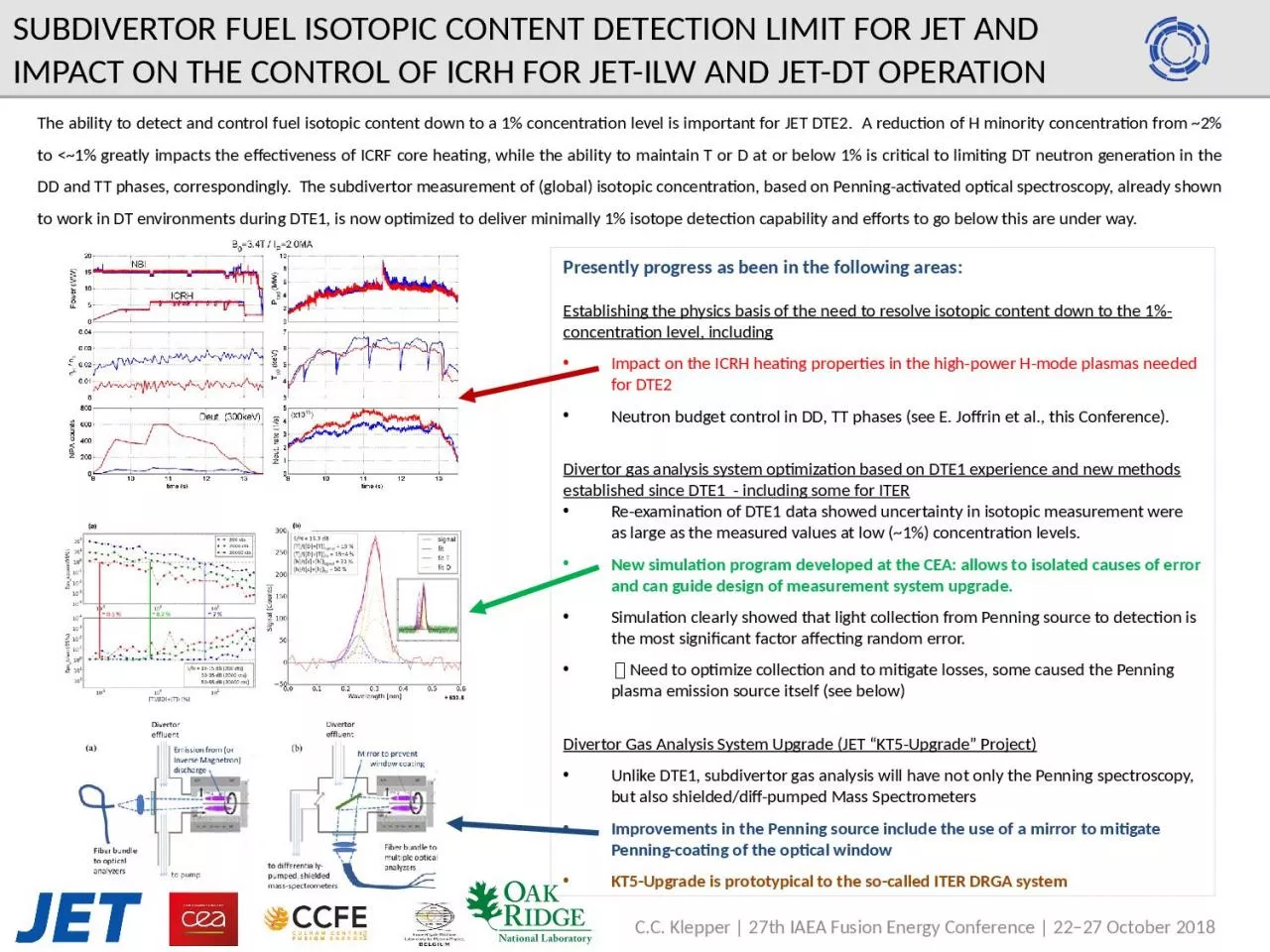

Presently progress as been in the following areas Establishing the physics basis of the need to resolve isotopic content down to the 1concentration level including Impact on the ICRH heating properties in the highpower Hmode plasmas needed for DTE2 ID: 934856
Download Presentation The PPT/PDF document "SUBDIVERTOR FUEL ISOTOPIC CONTENT DETECT..." is the property of its rightful owner. Permission is granted to download and print the materials on this web site for personal, non-commercial use only, and to display it on your personal computer provided you do not modify the materials and that you retain all copyright notices contained in the materials. By downloading content from our website, you accept the terms of this agreement.
Slide1
SUBDIVERTOR FUEL ISOTOPIC CONTENT DETECTION LIMIT FOR JET AND IMPACT ON THE CONTROL OF ICRH FOR JET-ILW AND JET-DT OPERATION
Presently progress as been in the following areas:Establishing the physics basis of the need to resolve isotopic content down to the 1%-concentration level, includingImpact on the ICRH heating properties in the high-power H-mode plasmas needed for DTE2Neutron budget control in DD, TT phases (see E. Joffrin et al., this Conference).Divertor gas analysis system optimization based on DTE1 experience and new methods established since DTE1 - including some for ITERRe-examination of DTE1 data showed uncertainty in isotopic measurement were as large as the measured values at low (~1%) concentration levels.New simulation program developed at the CEA: allows to isolated causes of error and can guide design of measurement system upgrade.Simulation clearly showed that light collection from Penning source to detection is the most significant factor affecting random error. Need to optimize collection and to mitigate losses, some caused the Penning plasma emission source itself (see below)Divertor Gas Analysis System Upgrade (JET “KT5-Upgrade” Project)Unlike DTE1, subdivertor gas analysis will have not only the Penning spectroscopy, but also shielded/diff-pumped Mass SpectrometersImprovements in the Penning source include the use of a mirror to mitigate Penning-coating of the optical window KT5-Upgrade is prototypical to the so-called ITER DRGA system
C.C. Klepper | 27th IAEA Fusion Energy Conference | 22–27 October 2018
The ability to detect and control fuel isotopic content down to a 1% concentration level is important for JET DTE2. A reduction of H minority concentration from ~2% to <~1% greatly impacts the effectiveness of ICRF core heating, while the ability to maintain T or D at or below 1% is critical to limiting DT neutron generation in the DD and TT phases, correspondingly. The subdivertor measurement of (global) isotopic concentration, based on Penning-activated optical spectroscopy, already shown to work in DT environments during DTE1, is now optimized to deliver minimally 1% isotope detection capability and efforts to go below this are under way.